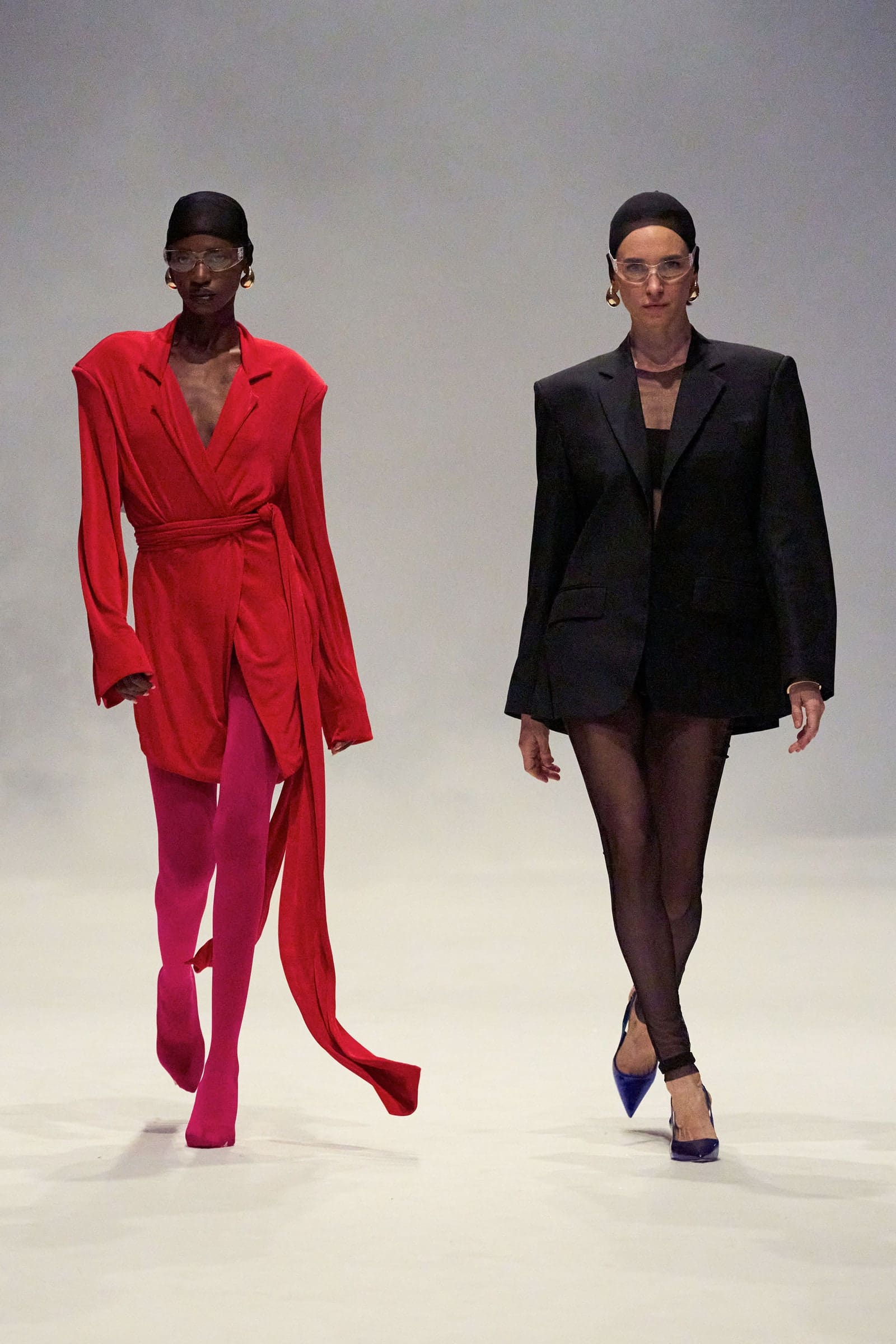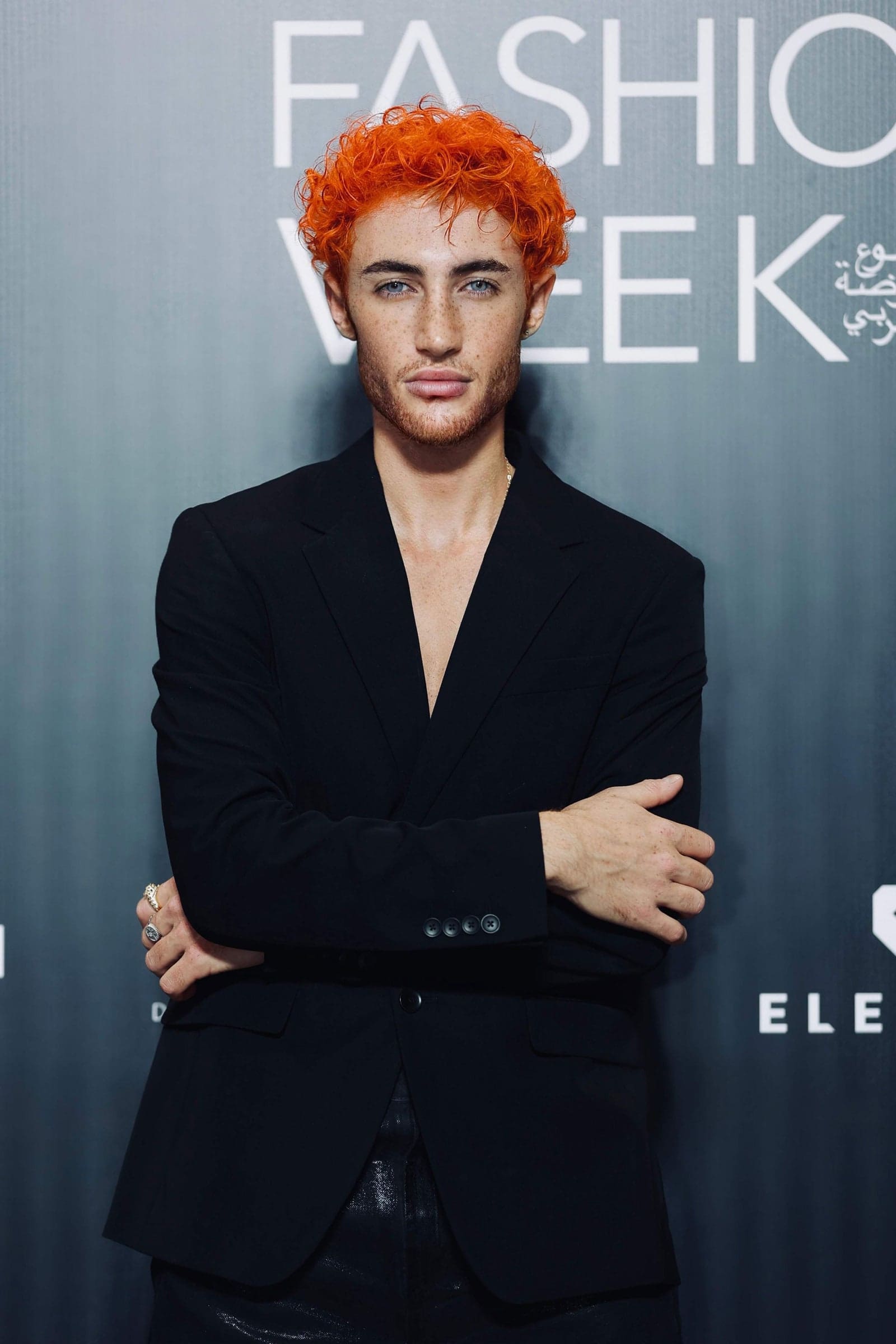Photo: Courtesy Carolina Herrera
The city wants to sit alongside the big four fashion weeks as a globally important player. For now, it remains a regional event — but local industry stakeholders are optimistic about the future.
Dubai Fashion Week (DFW) wants to make its mark on the global stage. Its Spring/Summer 2024 edition kicked off on 9 October with a showcase by New York-based brand Carolina Herrera and concluded this Sunday with Naomi Campbell walking the runway for Malaysian designer Rizman Ruzaini. Local designers and buyers were enthusiastic, but most agree DFW still has some way to go before it joins the big league.
The fashion hub of the Middle East, Dubai is renowned for its penchant for high-end luxury. It’s anchored by the iconic Dubai Mall, one of the world’s largest shopping destinations, which houses more than 1,200 retail outlets, including department stores Galeries Lafayette and Bloomingdale’s.
This is not the first time the city has set its sights on establishing a globally relevant fashion week. Past attempts — including Fashion Forward Dubai, International Fashion Week Dubai and Middle East Fashion Week — failed to leave a lasting impact. Arab Fashion Week had more success, hosting 21 editions in the city between 2015 and 2022. It was rebranded as DFW in early 2023, holding an inaugural edition for AW23 in March.
The organisers decided to forge ahead with the SS24 event despite the outbreak of the Israel-Hamas war, which has led to the cancellation of many consumer–facing events across the Middle East in recent days. While none of the DFW shows were cancelled, the organisers called off the after party. Streetwear brand The Giving Movement also opted to cancel its after-show party.
DFW is organised by the Arab Fashion Council and Dubai Design District (D3), a purpose-built business park for creative industries, which is part of the United Arab Emirates-based entity Tecom Group. “In the past, there was no collective, long-term vision for the Middle East’s fashion landscape, making it challenging for a robust fashion platform to truly take off,” says Khadija Al Bastaki, senior vice president of D3. “Arab Fashion Week changed the game, becoming the region’s most consistent and credible fashion platform, with 21 editions over seven years, amplifying talented designers and inspiring collections and collaborations across the region.”

For Carolina Herrera, the Arab region ranks as its second biggest market after the US for beauty and fashion. “We were thrilled to receive the invitation [to be this season’s guest designer],” says Wes Gordon, creative director of Carolina Herrera. “This is a city that’s always been so important to us. Home to so many cultures, the women here are very fashion-savvy. I think there is a misconception that this region is only interested in evening dresses.”
The brand presented a selection of pieces from Carolina Herrera’s SS24 collection, originally showcased in New York, and from its resort collection, first shown in Rio de Janeiro. A few exclusive pieces were also unveiled at the event, and a trunk show was held at Dubai’s Mall of the Emirates afterwards.
Can Dubai become a global fashion city?
Gordon says he believes a regional fashion week can join the global calendar if it has a unique perspective. “For an international designer this gives them the opportunity to come to a market and really understand what women here are looking for,” he points out.
Other international names on the DFW schedule included Jil Sander and Parisian brand Weinsanto. However, the core focus remains on regional designers, including The Giving Movement, size-inclusive designer Dima Ayad; couturier Michael Cinco; upcycling brand The Emergency Room; and contemporary fashion label Blssd. DFW plays an important role for designers in the Middle East, says Ayad. “I don’t think the feeling of seeing clothes move on a runway can ever be dismissed. There is way more beauty, glamour and storytelling than a static lookbook. To be considered a fifth fashion capital, I do think it is necessary for Dubai to have a fashion week.”
DFW’s ability to attract brands from the Global South, including Russia’s Valentin Yudashkin and Thailand’s Pipatchara, highlights the demand for a fashion perspective that transcends Western influence. Pipatchara Kaeojinda, known for her innovative upcycling techniques, has participated in both editions of DFW and seen interest from the trade and local Arab consumers. “With its infrastructure, location and the consistent support of new talents by the market, Dubai has a high potential to become a global fashion city,” she says.

Shivang Dhruva, founder and director of FAD International Academy — which has a campus in Dubai and two in India (Mumbai and Pune) — held a student showcase during DFW. “Comparing it to Paris, London, Milan or New York may not work as I feel we are still at nascent stages in terms of talent readiness for a B2B event,” says Dhruva. “The platform gives our talents the industry integration and exposure alongside established labels to build the much-needed aspiration amongst our students has been our key goal whilst partaking at DFW. A sustained integration with industry through DFW will continue for us at FAD International.”
Bringing in the buyers
While the spotlight may shine on Dubai as an international city, DFW’s mission also revolves around bolstering buyer interest in talent from across the region. “Until now, the regional designers had to invest in a Paris showroom to attract international buyers, but having an official fashion week should change this,” says Lama Riachi, founder of Blssd, a Dubai-based label, who has taken part in both editions of DFW. She believes as DFW matures, more buying will take place during the event.
Ayad says it’s too early to judge DFW, given it’s only two seasons in. “DFW gets your name out there. With time, the buyers will catch on.”
Regional buyers also believe that DFW can bring value to the industry. “What I have noticed is how DFW pushes designers to be more focused and present full collections that include shoes and bags. I see DFW as an incubator of talents,” says Caterina Ercoli, head of buying at luxury footwear and accessories retailer Level Shoes. However, she notes that its timing — coming after Paris Fashion Week, when buyers are tired and have used up most of their budgets — is something DFW might reconsider.
This year, the Arab Fashion Council introduced a ‘mega showroom’ concept featuring a ‘Shop the Runway’ pop-up at the D3-based concept store Fltrd, to introduce collections from regional designers beyond the runway. Jacob Abrian, CEO of the Arab Fashion Council, says: “One of the ways we’re working to better facilitate new opportunities for talent is by introducing this ‘mega showroom’ for the first time. Here, media, buyers, and fashion enthusiasts can buy and explore collections by designers who are not showcasing on the runway in a more organic, personable way.”
Georgina Gainza, fashion buying director of Al Tayer Insignia, which oversees department stores including Bloomingdale’s and Harvey Nichols in Dubai, feels that DFW is an integrated experience that embraces not only the diversity of a multicultural city like Dubai, but also draws on the fact that Dubai is a major global retail hub. “I have seen several different fashion week propositions come and go over the years in Dubai. It was confusing, and it is fantastic at last to see a consolidated offering, which I believe will take Dubai into the future.”
Comments, questions or feedback? Email us at [email protected].
This article was originally published on Vogue Business.
